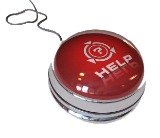Search This Site

Custom Search
|
 |
|||
Computer Power SupplyPower Supply Schematics Will Help The InstallChoose the right computer power supply for your system; use power supply reviews to choose from the many computer power supplies and suppliers available. Understand power supply schematics for installation and troubleshooting. This supply component, yes, you guessed it, supplies power to the computer. The power supply converts 100V - 120V or 200V - 220V power to low voltage DC power that is usable by a computer. Power supplies typically supply three voltages to the computer: 3.3, 5, and 12 volts. These voltage values are known as "rails". The 3.3 and 5 volt rails are used normally to power digital circuits, while the 12V rail will normally power internal or external hard drives, fans, and graphic cards. Power supplies have pretty much standardized to conform with the ATX form factor. This allows power units to be interchangable between computers. So when you decide to upgrade that old Dell computer, you don't have to worry about the power supply not fitting. The power supply for computers is measured in watts, abbreviated "W". Their rating is based on the maximum power output, which typically ranges from 300W for lower end desktops, to 2000W for multiple core servers. There are a number of good power supply reviews that can help when selecting. You want to make sure that you match up your power needs with your power supply. Using a power supply that outputs too much power is a waste of energy, while using one that does not output enough power will cause problems with your computer.
Power Supply ConnectionsA power supply will normally have multiple types of connections...
Buying ConsiderationsWhen you are looking to purchase a power supply for your computer, there are a few things to take into consideration. Power NeedsIt is important to strike a good balance between your computer's power needs and the output of the power supply. Too much power from the power supply, and you are wasting power and money. Too little power output, and your computer will start acting weird. How to tell if your power supply just isn't cutting it:
For the majority of PCs, a quality 450W power supply will be sufficient. The only time you will need more power than that is if you are running a higher end graphics card, such as the latest Nvidia and Radeon cards. When looking at power supplies, there are a few technical specs to keep your eye on:
Computer power supplies are often reasonably priced and easy to find. Look for a supply unit that is well built, will not quickly over-heat (which is a primary cause of failure) and that will last.
Read more about Power Supply Reviews. Find out more about External Hard Drives. Return to Build Your Own Computer Home Page from Computer Power Supply. |
Need help diagnosing computer problems or challenges? Check out our troubleshooting page for common computer building issues. Thanks for
|
|||
What's New
| Output Devices | Cooling | Cases | Modems | Troubleshooting | Computer Guides | Buying Guide |
| Free Games | Computer Software | Green Computers | Ultra Mobile PC | Glossary | Builder's Corner |
| Site Index | Contact Us | Advertising |
Return to top
Copyright© 2008-2014. Voice Marketing Inc. All Rights Reserved. Read our Privacy Policy.



